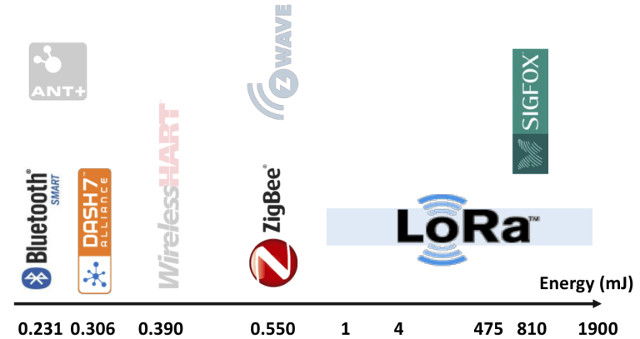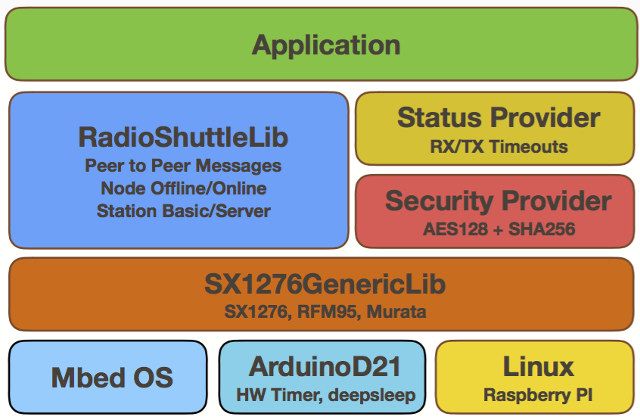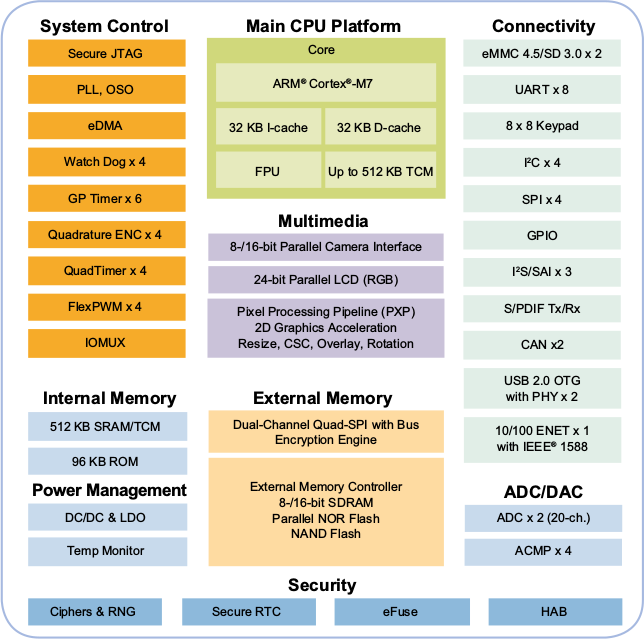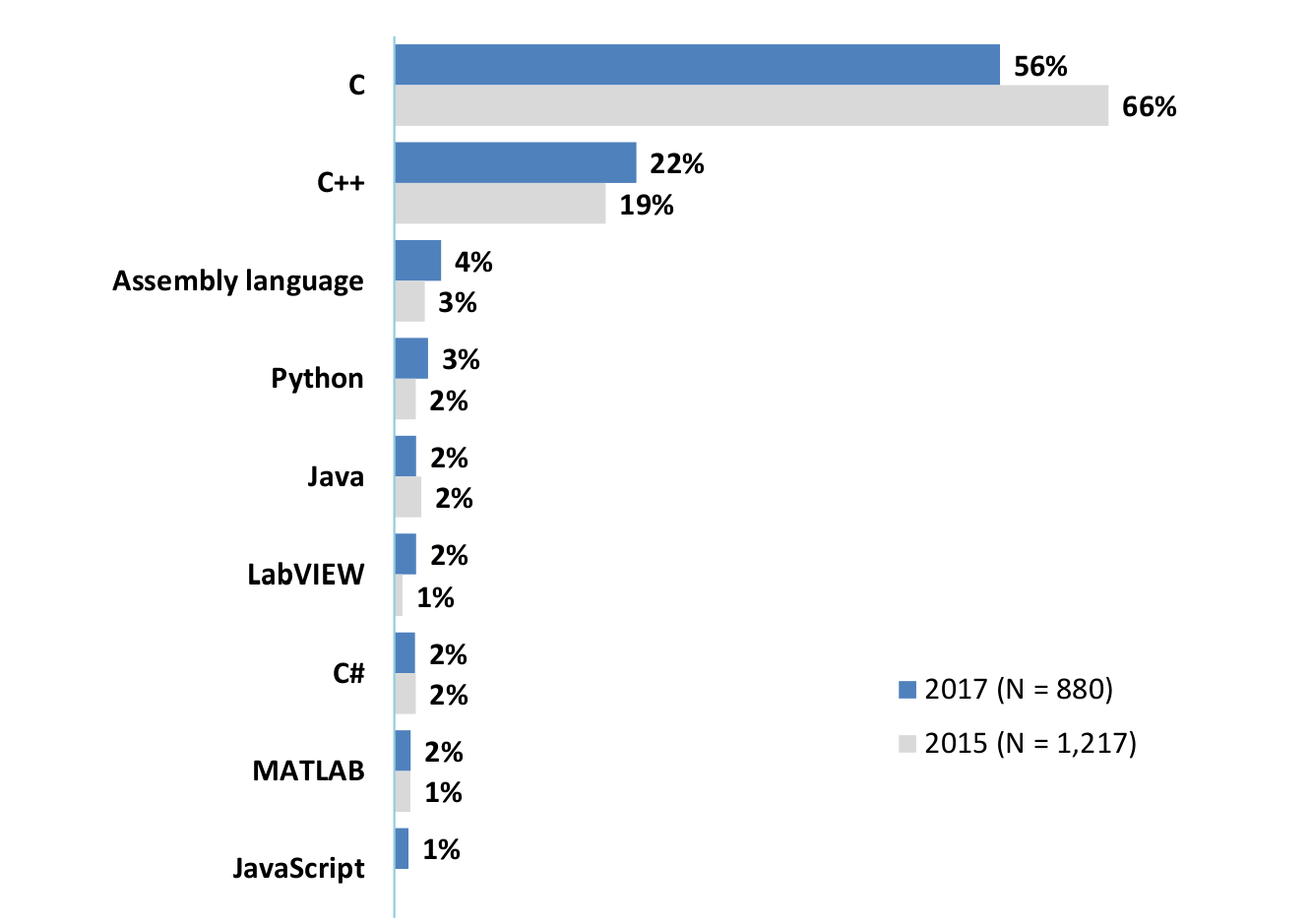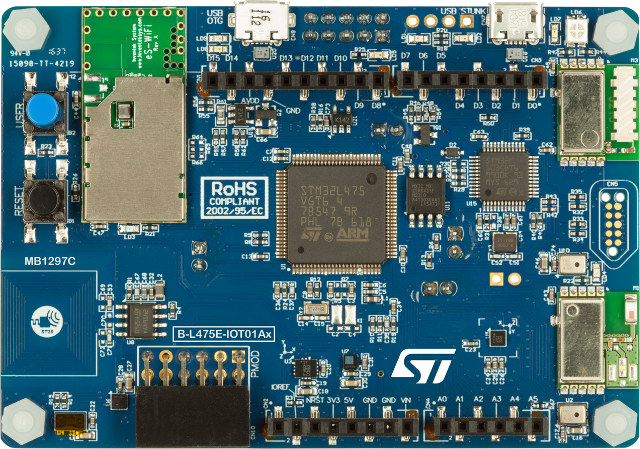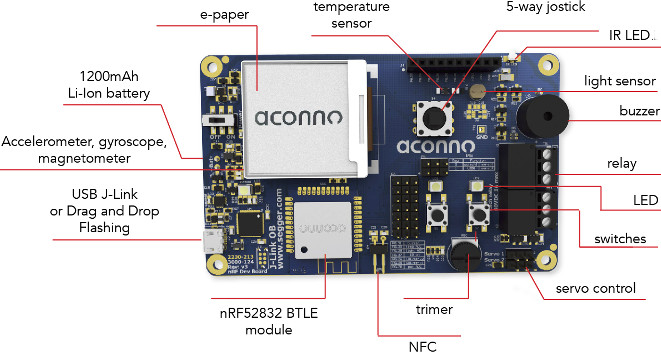Over the last few years, I’ve written several article about LoRaWAN, Cellular IoT, and Sigfox based long range low power IoT solutions. DASH7 is another LPWAN (Low Power Wide Area Network) standard that operates on the same 868 and 915 MHz ISM bands as LoRa and Sigfox, but has much lower power consumption, and the cost of a shorter range up to 500 meters, instead of the 5+km associated with LoRa or SigFox. The DASH7 Alliance Protocol (D7A) is an Open Standard, and if you want more details you can download version 1.1 of the specifications on DASH7 Alliance website. I’m writing about DASH7 today thanks to an article on ST blog about Wizzilab’s Wizzikit, an evaluation kit and framework for DASH7 with a gateway, and several nodes that can also optionally support LoRaWAN and Sigfox protocols. The kit is comprised of the following items: WizziGate GW2120 Ethernet/Wifi/Dash7 gateway – based […]
RadioShuttle Network Protocol is an Efficient, Fast & Secure Alternative to LoRaWAN Protocol
LoRaWAN protocol is one of the most popular LPWAN standards used for the Internet of Things today, but some people found it “lacked efficiency, did not support direct node-to-node communication, and was too costly and far too complicated for many applications”, so they developed their own LoRa wireless protocol software called RadioShuttle, which they claim is “capable of efficiently sending messages in a fast and secure way between simple LoRa modules”. Some of the key features of the protocol include: Support for secure or insecure (less time/energy) message transmission, multiple messages transmission in parallel Unique 32-bit device ID (device number) per LoRa member, unique 16-bit app ID (program number for the communication) Security – Login with SHA-256 encrypt password; AES-128 message encryption Air Traffic Control – Nodes only send if no LoRa signal is active on that channel. Optimized protocol – Message delivery within 110 ms (SF7, 125 kHz, free […]
NXP i.MX RT Series Crossover Embedded Processor is Based on an ARM Cortex-M7 Core @ 600 MHz
Microcontrollers (MCUs) provide real-time processing, low power, low cost, and plenty of I/Os, but with security and user interface requirements of recent embedded devices, the processing power may be a limitation, and embedded systems designers may have to use an application processor instead gaining performance, but losing some of the benefits of MCUs. The bridge the gap between performance and usability, NXP has launched i.MX RT series of Crossover Embedded Processor which uses the powerful ARM Cortex-M7 MCU core clocked at up to 600 MHz, a frequency partially made possible by eliminating on-chip flash memory. The first member of the family is NXP i.MX RT1050 with the following key features and specifications: MCU Core – ARM Cortex-M7 @ up to 600 MHz; 3015 CoreMark / 1284 DMIPS Memory – Up to 512KB SRAM/TCM (Tighly Coupled Memory) with response time as low as 20 ns Storage – 96KB RAM; interfaces: NAND, […]
Aspencore 2017 Embedded Markets Study – Programming Languages, Operating Systems, MCU Vendors, and More
Aspencore media group asked readers of their EE Times and Embedded.com websites to fill out an online survey about their embedded system projects. They got 1,234 respondents mostly from North America (56.3%), followed by Europe (25.2%), and Asia (10.6%). This resulted in a 102-page market study which you can download here. I’ve extracted a few slides to have a look at some of the trends. C language is still the most used language in embedded systems, but other languages like C++, Python and even assembly language are gaining traction. Operating system is more spread with Linux being the most used via Embedded Linux distributions, Debian, and Ubuntu. FreeRTOS comes in second place, while Android registers fourth with 13%. Git has finally supplanted Subversion in 2017, with all other version control software losing ground. Switching to some hardware slides, 44% used a development board to start their embedded design with ST […]
GR-LYCHEE Development Board to Combine Renesas RZ/A1LU Processor, ESP32 Module, and a VGA Camera
Japanese semiconductor vendors have mostly stayed away from the maker market, at least outside Japan, as most people would be hard-pressed to come up with a hobbyist development board powered by processor or micro-controller from Toshiba, Sony, Renesas or other Japanese companies, despite the three aforementioned names being in the top 20 semiconductors companies. I can only remember having written about Fujitsu F-Cue 96Boards, as well as Renesas GR-PEACH mbed board since I started this blog 7 years ago. Renesas seems to be the only company to have a real community behind with their “Gadget Renesas” pink-colored development boards, and the latest and seventh board is GR-LYCHEE powered by Renesas RZ/A1LU ARM Cortex-A9 processor, and equipped with a WiFi & Bluetooth module, and a camera. Renesas GR-LYCHEE board preliminary specifications: Micro-processor – Renesas RZ / A1LU (R7S721030VCFP 176-pin QFP) ARM Cortex-A9 Processor @ 384 MHz with 3MB on-chip SRAM Storage […]
STMicro Unveils STM32L4 Discovery Kit for IoT with WiFi, BLE, NFC, Sub-GHz RF, and Plenty of Sensors
STMicro has recently introduced B-L475E-IOT01A Discovery kit powered by STM32L4 Cortex-M4 and targeting IoT nodes with a choice of connectivity options including WiFi, Bluetooth LE, NFC, and sub-GHZ RF at 868 or 915 MHz, as well as a long list of various environmental sensors. B-L475E-IOT01A Discovery kit key features and specifications: MCU – STM32L4 Series MCU based on ARM Cortex -M4 core with 1 MB Flash memory, 128 KB SRAM Storage – 64 Mbit (8MB) Quad-SPI Flash memory (Macronix) Connectivity Bluetooth 4.1 LE module (SPBTLE-RF) Sub-GHz (868 or 915 MHz) low-power-programmable RF module (SPSGRF-868 or SPSGRF-915) Wi-Fi module based on Inventek ISM43362-M3G-L44 (802.11 b/g/n compliant) Dynamic NFC tag based on M24SR with its printed NFC antenna Sensors 2x digital omni-directional microphones (MP34DT01) Capacitive digital sensor for relative humidity and temperature (HTS221) 3-axis magnetometer (LIS3MDL) 3D accelerometer and 3D gyroscope (LSM6DSL) 260-1260 hPa absolute digital output barometer (LPS22HB) Time-of-Flight and gesture-detection […]
Aconno Bluetooth 4.0 & 5 IoT Development Board Features an nRF52832 or nRF52840 Module, an e-Paper Display, Sensors and More
Bluetooth 5 is the latest iteration of Bluetooth with up to four times the speed and twice the range of Bluetooth 4.0 LE, and so far apart from Puck.js and Nordic Semi nRF52840 devkit, I had not seen many Bluetooth 5 IoT modules or boards. Aconno, a German startup, has designed ACD-52832 Bluetooth 4.0 / Thread / ANT+ IoT development board based on their own nRF52832 module, and equipped with some goodies like a black & white e-Paper display, a joystick, sensors, I/Os, etc… They’ve also launched an updated module with Bluetooth 5 using nFR52840 SoC. I don’t have the full details about the new module, but the nRF52832 module and devkit is interesting to look at, especially features should be similar. Aconno ACD-52832 board specifications: Wireless Module – ACN52832 based on Nordic Semi nRF52832 ARM Cortex-M4 @ 64 MHz SoC with Bluetooth Smart, ANT+, Thread, NFC, and 2.4 GHz […]
STMicro Introduces STM32 LoRaWAN Discovery Board & I-NUCLEO-LWAN2 STM32 LoRa Expansion Board
STMicroelectronics and Mouser have launched two new products with LoRa connectivity: STM32 LoRaWAN Discovery Board with an STM32L072 ARM Cortex M0+ MCU and Semtech SX1276 transceiver, and I-NUCLEO-LRWAN1 STM32 LoRa expansion board for STM32 Nucleo boards with an STM32L052 MCU and Semtech SX1272 radio transceiver. STM32 LoRaWAN Discovery Board B-L072Z-LRWAN1 STM32L0 Discovery kit LoRa specifications: LoRa Module – Murata CMWX1ZZABZ-091 with MCU – STM32L072CZ ARM Cortex -M0+ MCU @ 32 MHz with 192 KB Flash memory, 20 KB RAM, 20 KB EEPROM SX1276 transceiver supporting LoRa, FSK, GFSK, MSK, GMSK and OOK modulations Antennas – SMA and U.FL RF interface connectors, 50 Ohm SMA RF antenna Debugging – On-board ST-LINK/V2-1 supporting USB re-enumeration capability Expansion – Arduino Uno V3 connectors Misc – 7x LEDs, 2x push-buttons (user and reset) Power supply – Via USB bus or external VIN/3.3 V supply voltage or batteries; 3xAAA-type-battery holder for standalone operation (on the […]


